If you were told by your grandfather that “art is the only life to have”, it may have made your career path incredibly straight and simple. With that kind of direction, and as a descendant of three generations of visual artists and crafts people, it is no surprise that Australian artist Kurt Brereton has enjoyed careers as a visual and digital media artist, a writer of books, performance art and films and a creative arts and design academic. He now focuses on being a full-time artist and runs workshops offering professional art tuition under his site artstayz.com.au.
Kurt had his first solo exhibition at Bondi Pavilion Gallery, Sydney in 1980 and since then has mounted over 30 solo exhibitions in Australia and overseas in USA, England, Germany, Japan, Ireland and Taiwan.
He focuses on fibre, delighting in its intense colours and tactile materiality. Combining it with paint and linocut, he chooses to specialise in hand embroidery, valuing it as an ancient method of image-making that openly and honestly combines the mind and body.
In our interview with Kurt we discover how he respectfully laid aside his traditional stitch training and adopted his “personal chaos method”, and yet is honing this, employing a Zen approach to simplifying his work as part of the “slow culture” movement.
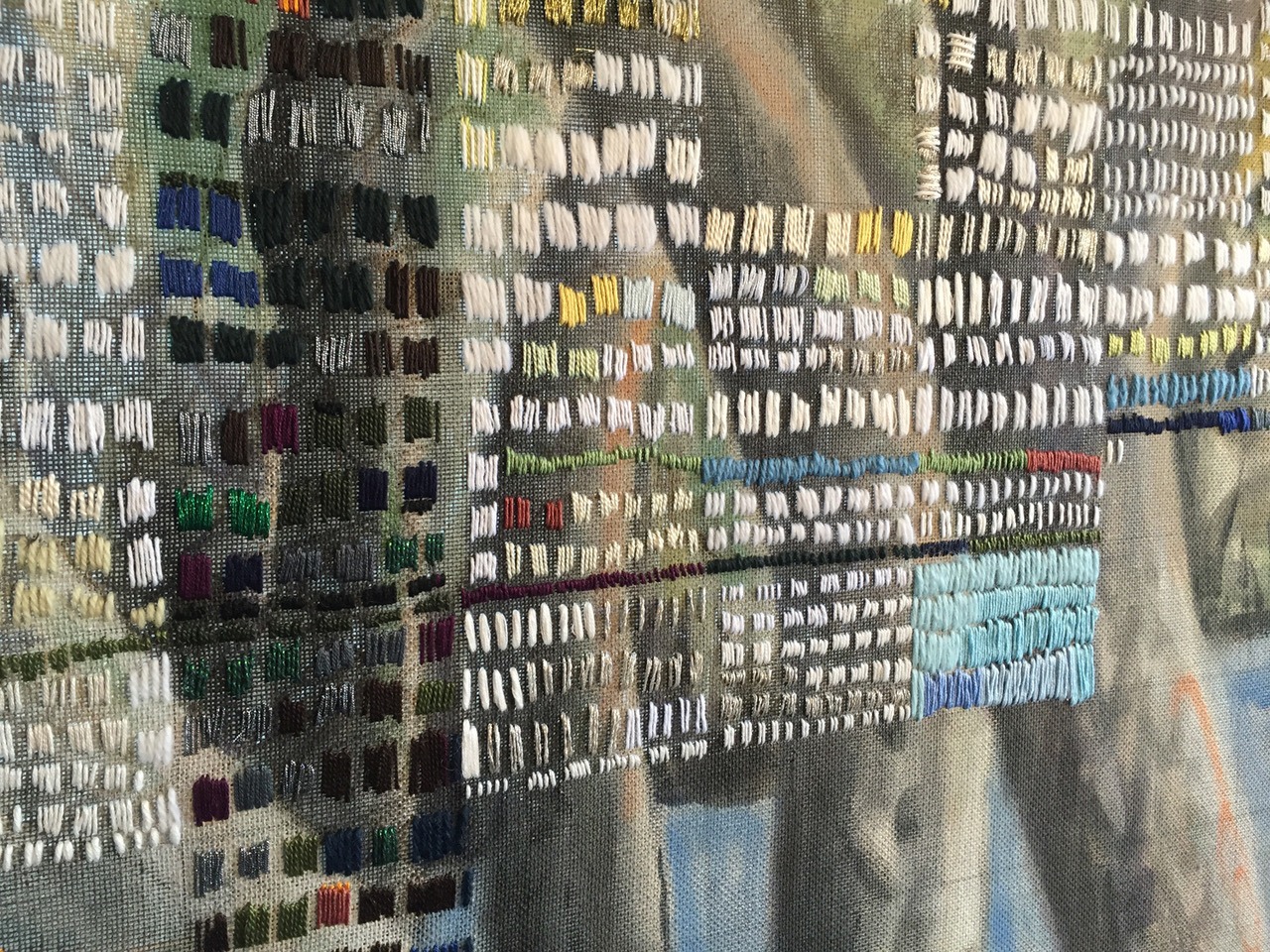
Art is life
TextileArtist.org: What initially attracted you to textiles as a medium? How was your imagination captured?
I grew up with a mother – Janet Brereton – who was a pioneer fibre artist; she worked in knotted rope during the 1960s-1980s. So it followed, quite naturally, that I was immersed in the process of hand-dying cotton rope and the creation of large scale wall hangings throughout my childhood.
In my own work I began producing performance paintings and drawings that involved marking time by building up strokes of paint and drawn marks. Each stroke became a stitch in time. Every hand-made stitch marked a unique expression of a moment in time and space. These paintings were time-maps; I wanted to highlight the direct trace, or signature, of my hand as an overt analogue statement in our digital virtual age of hyper-real media.
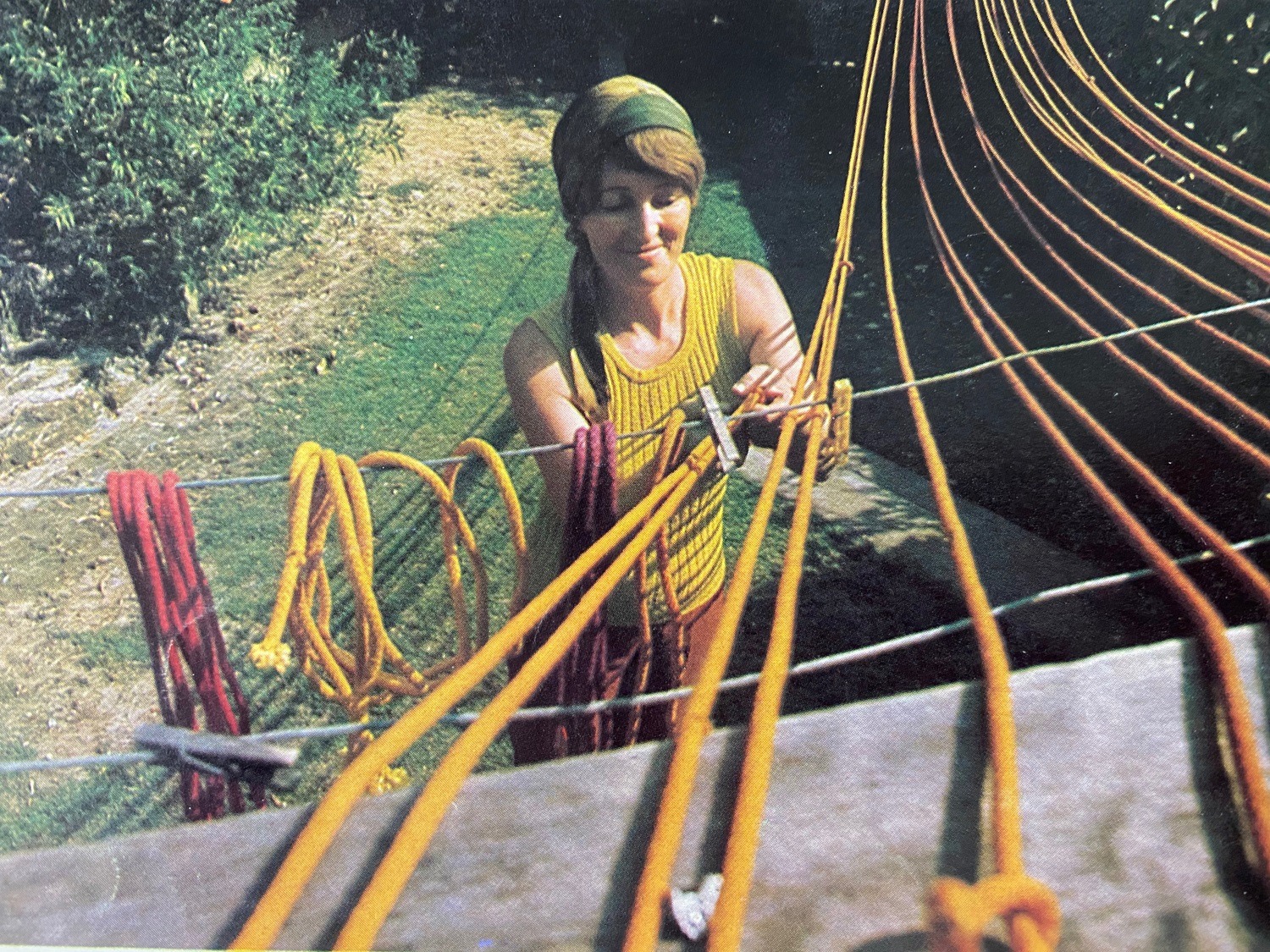
What or who were your early influences and how has your life/upbringing influenced your work?
I come from three generations of visual artists and crafts people. My grandfather, Tom Henderson, was a modernist painter and art teacher at Glasgow School of Art in the early 1900s before emigrating to Melbourne in the 1920s. My father, Kevin Brereton, was a sculptor and ceramic artist and my mother worked in fibre.
I sold my first artworks, aged 12, in our family gallery. I spent my childhood throwing pots, making jewellery and helping my mother, either working in our gallery or assisting in running craft workshops.
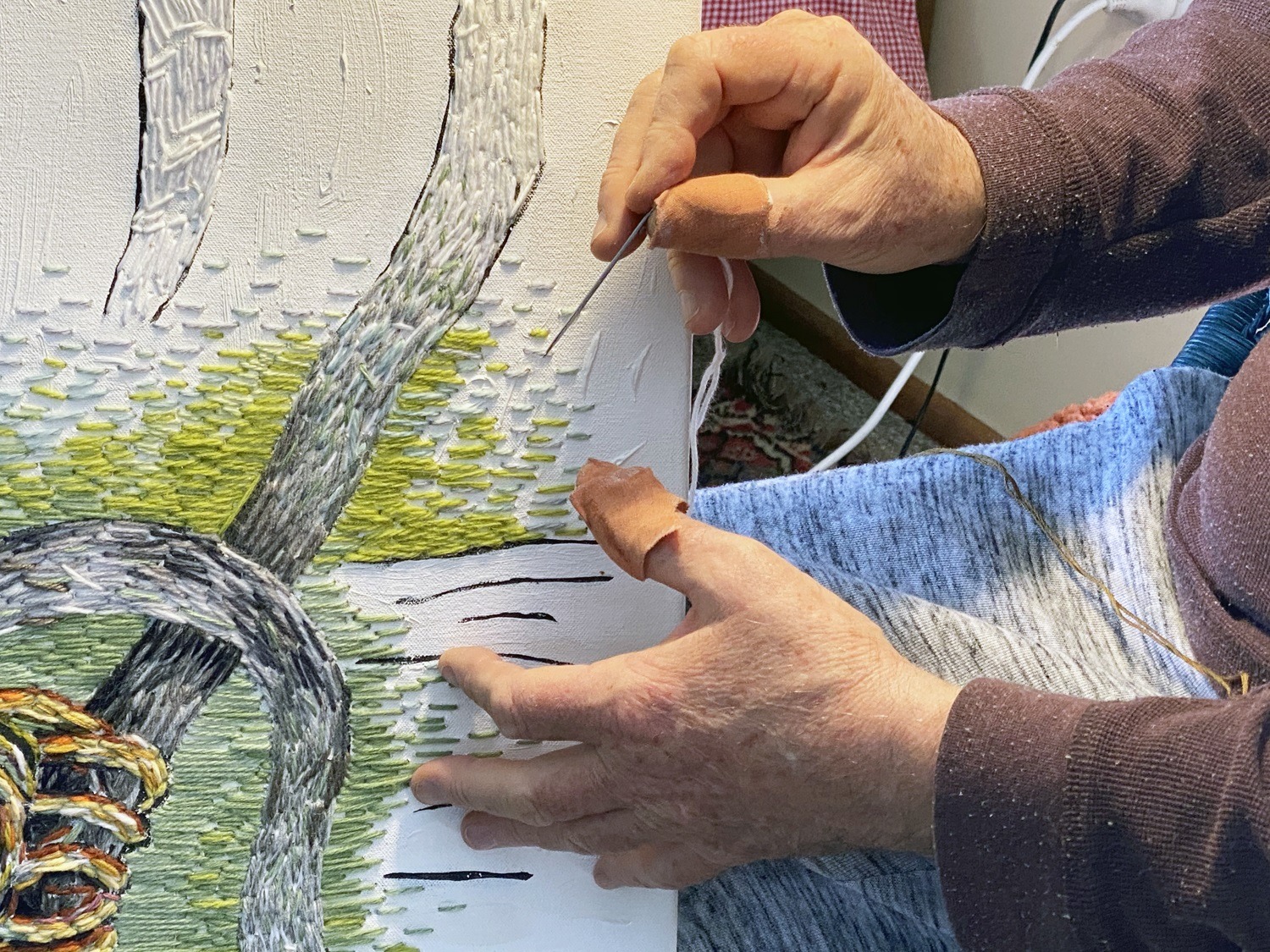
What was your route to becoming an artist?
I initially studied environmental science (Natural Resources) at university in 1974, transferring to Art School in Sydney in 1975-78, majoring in photography and video. I was interested in performance art and worked with a theatre company for a year before working as an audio-visual technician at Sydney College of the Arts.
During the early 1980s I made short art films and artist books before joining the University of Technology, Sydney in 1984 as a media production lecturer. It was 17 years later in 2001 that I resigned from full time academia as an Adjunct Professor to concentrate on my work as a full time artist. Today I continue to write, publish artist books and teach community art workshops.
My philosophy has always been “art is life and life is art.” So I see my art as one long series of multimedia performances or productions that include various technologies and media that generate specific happenings or events. I remember my Scottish grandfather telling me after I finished high school “art is the only life to have.” Artworks are byproducts of a way of living or being, in and of the world.
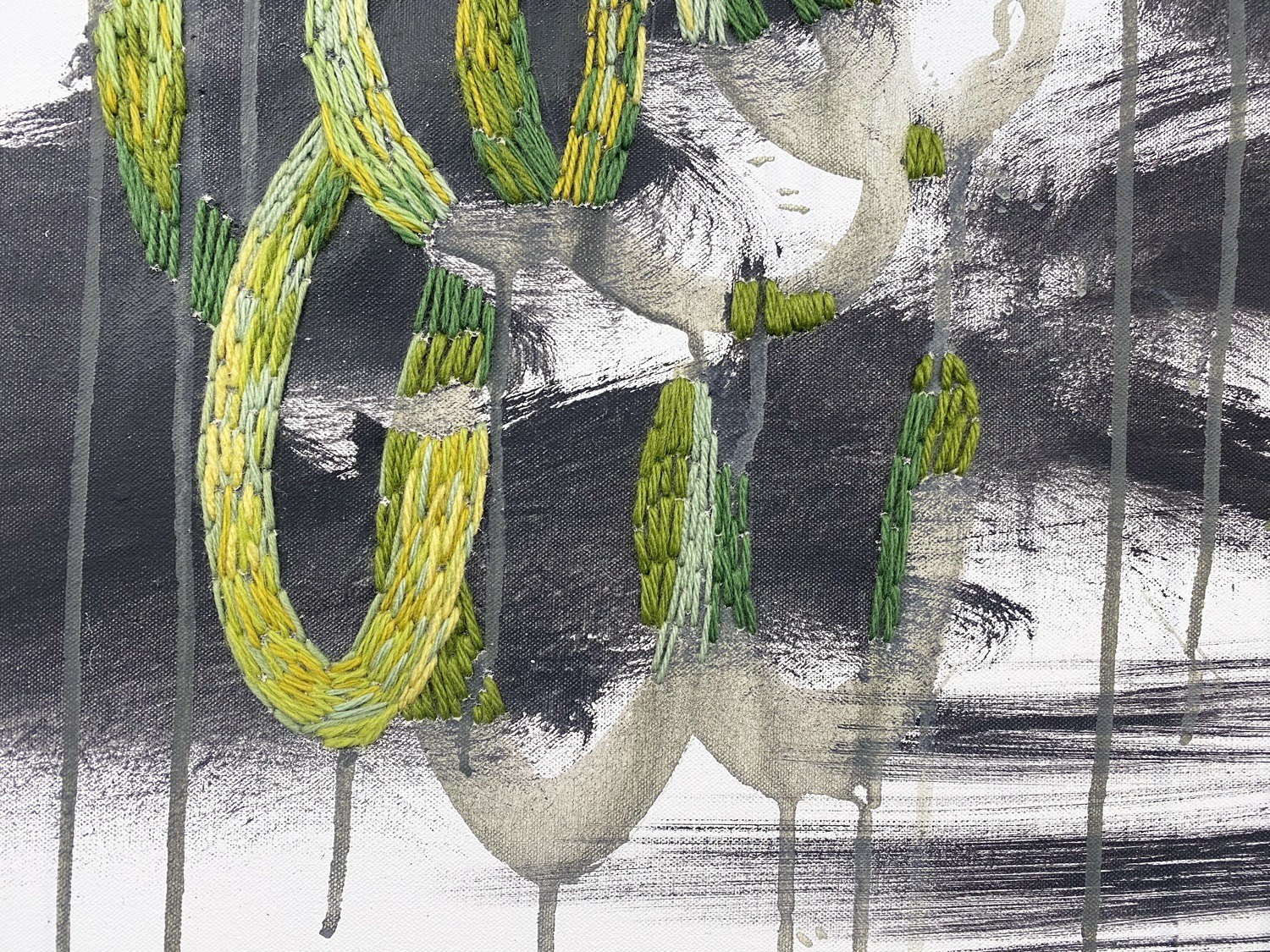
Slow chaos
Tell us about your process from conception to creation
I always begin with an idea or concept of the work; the idea determines the media and technology I use. Each medium brings its own unique capabilities and meanings. Fibre, and specifically embroidery by hand, is an ancient media. The intense colours and tactile materiality of cotton, wool or metallic threads contrast with the fluidity of oil or the graphic stamps of linocut printing.
I choose to work by hand with all its connotations of labour, analog mistakes, happy accidents and craft skills.
Having a clear idea or finished image in my mind is more an aim rather than a dictate. Each stitch reflects on the one before it and suggests the colour and character of the next stitch. Working with a variety of media adds steps in the production process. I often move from drawing to linocuts to painting to embroidery.
As time passes I find myself wanting to play with the signification afforded to each technique of constructing images. In our digital age the meaning of paint or embroidery has changed a lot. We, today, are part of the “slow culture” movement. Working by hand is a sacrificial occupation that speaks of the humanity of the artist in very visceral ways. No other system of image-making directly combines the mind and body in such an open, honest confession of the senses.
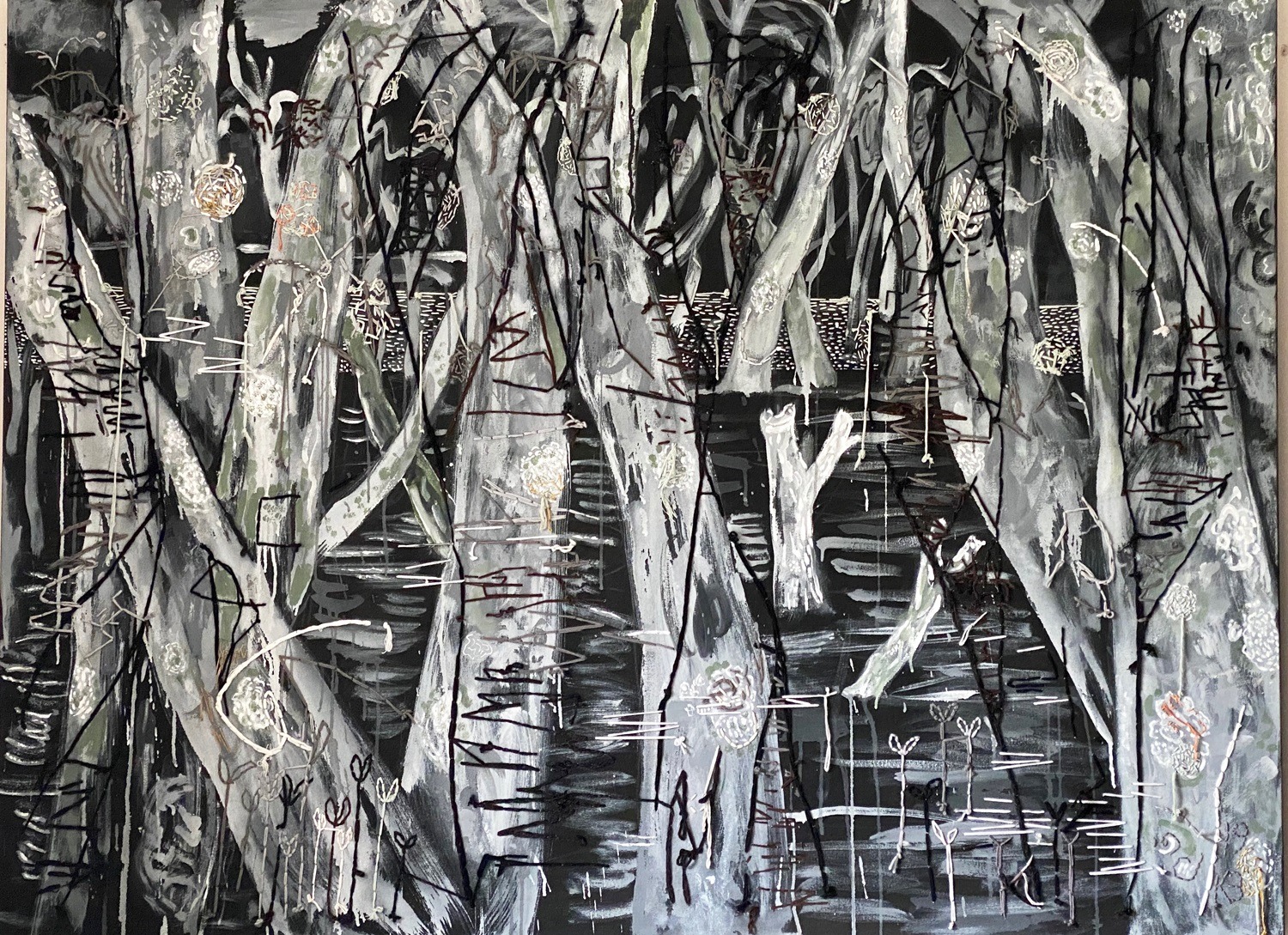
Tell us a bit about your chosen techniques and how you use them
From an early age I loved working across media. Fibres – threads, felt, rope, fabrics – for me are about making semiotic, or significant, connections – of tying, stitching, binding, knotting or hanging strings.
I use a simple stitching technique I jokingly call “the personal chaos method.” I know how to use many different lovely stitches but after a short training period I realised I consciously did not want to replicate the incredibly exacting work produced by my talented forebears. So I make original, one-off, overtly hand-crafted images that demand a considerable time to produce. This slow method allows a lot of time for critical reflection and refinement.
Some of my fibre works are more sculptural installations rather than paintings. I often use both sides of a canvas to make a screen with different images on each side. This suggests that behind our smoothed down “reality” lies a network of web-like connections that weave unconscious memories and metaphors of an internet of layered images and voices that map out our lives.
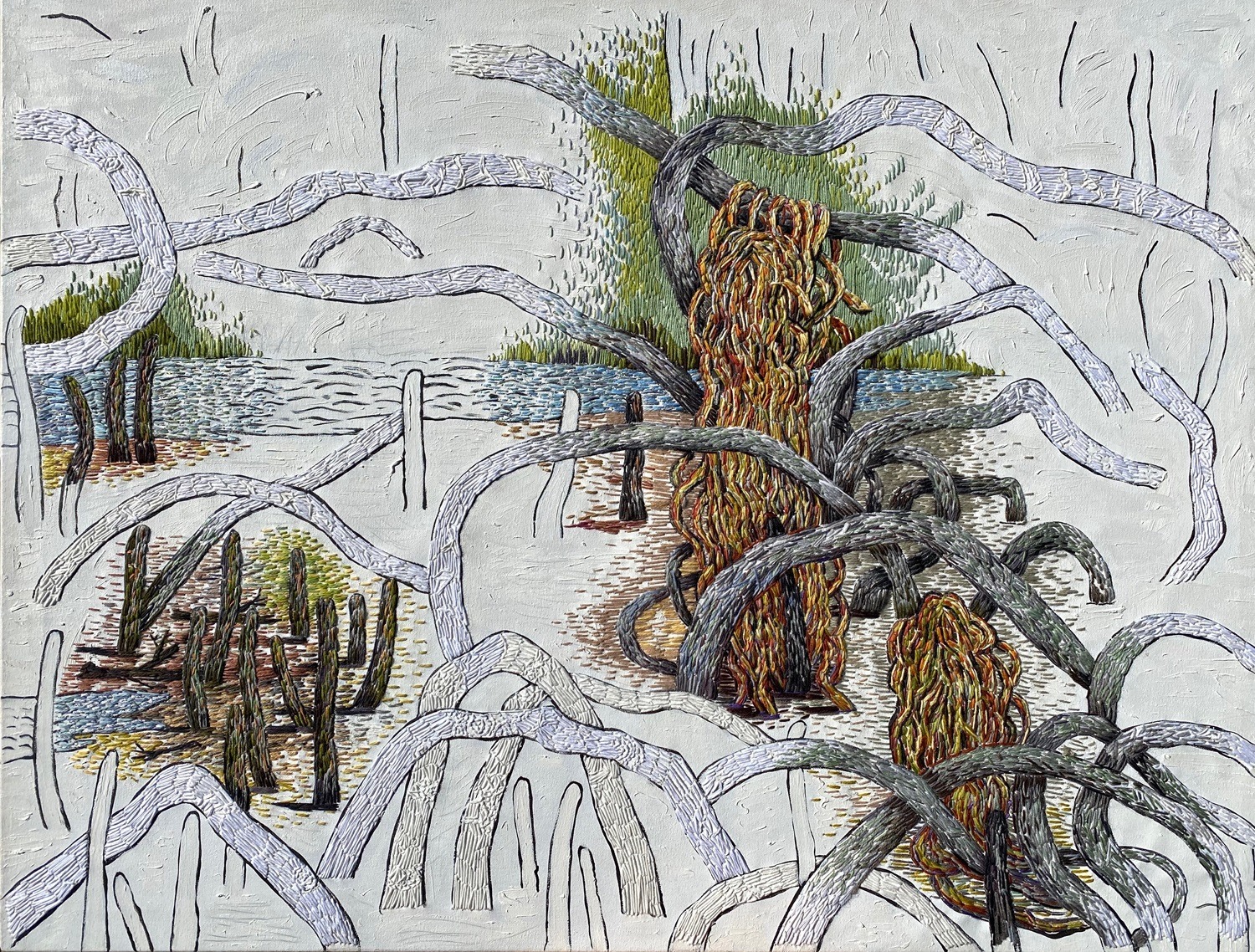
What currently inspires you?
I grew up in the mangroves on the far north coast of NSW in Australia. This littoral zone was about water, sand, complex ecosystems and a very subsistence lifestyle. After an academic career in Sydney I have returned to my muddy roots.
Studying environmental science gave me a language and knowledge of my country that now informs my art. For many years now I have been focused on my responsibility to engage with the climate crisis we now find ourselves buried in. My love and lived experience of the beach and estuarine world are now my main focus.
Research and constant experimentation in art practice also means keeping up to date with current events that affect how I see, feel and act upon the world.
I have no interest in aesthetics, a branded style and beauty rules, or art market fashions. I am inspired by people and political struggles, such as Pussy Riot and Black Lives Matter, as well my favourite historical and contemporary artists.
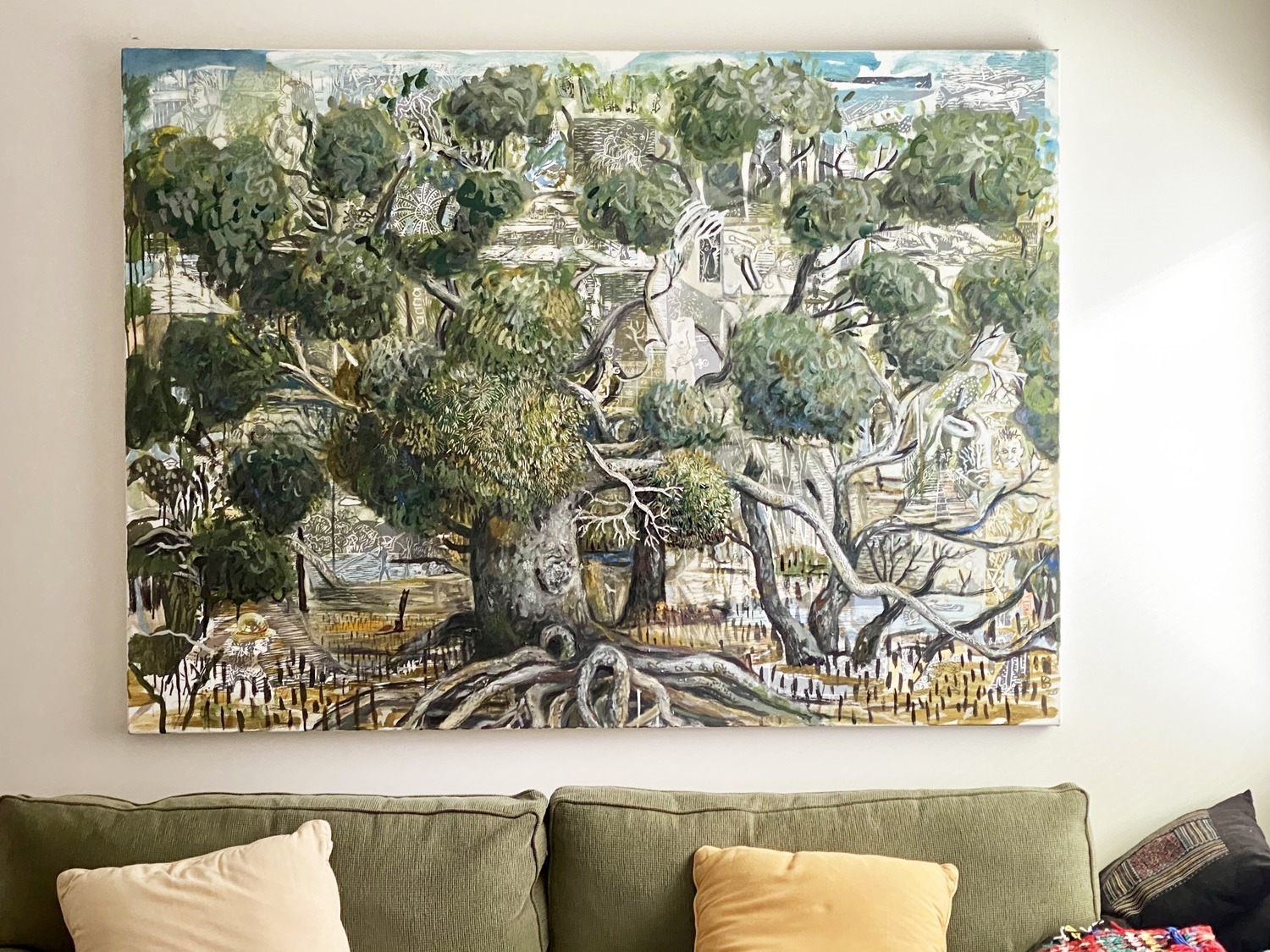
Stitching – a profound and simple act
Tell us about a piece of your work that holds particularly fond memories and why?
I recently sold a large embroidered painting titled Mangrove Memories that had taken me months to make. The process involved covering the canvas with many linocut stamps of childhood memories growing up inside the mangroves. I used embroidery to draw the viewer closer to this environment that appears slightly spooky, or underworldish, to most people. I wanted to suggest that the external face of a place is only the start of the experience of knowing how an environment ticks. So called “landscapes” are often frontal flat views of the country. I wanted to show how our personal connections helps forge the ways in which a country affects and shapes you.
I find that everyone sees different images and meanings in my works and I am often pleasantly surprised by these fluid readings. The stitches may stay the same, but their meanings change depending on who is reading.
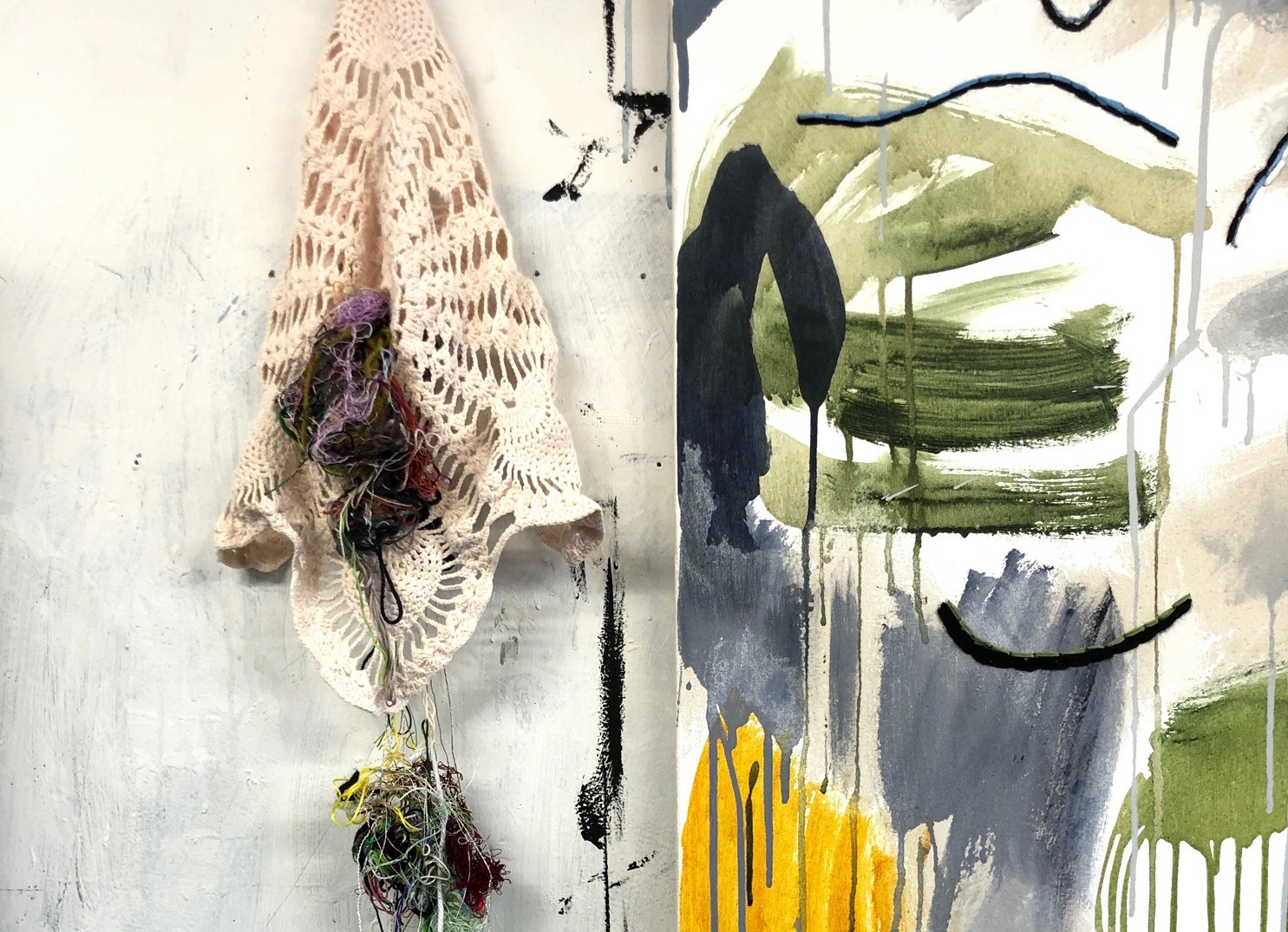
How has your work developed since you began and how do you see it evolving in the future?
As time goes by I find that I am focusing more on trying to simplify my means and technology of creating art. I love the Zen method of practice that says “think slowly and widely before acting quickly and confidently.”
Embroidery seems like the last method you would choose to demonstrate this philosophy I know. Yet the further I develop my technical skills and conceptual ideas, the more profound this simple act of stitching a coloured thread through a piece of fabric, seems to be. I think that as we move further into the post-digital era of AI and VR, biotech augmentation and gig economics, we will transform our relationship to the analog materiality of things.
The arrival of the digital apple changes the meaning and nature of every physical apple hanging on a tree. Now too, we have a new appreciation for the hand made object – that has embedded, in its very specific making, the core sample fingerprint of our own times.
For more information visit www.kurtbrereton.com and Instagram
Will Kurt’s story influence your stitching? We’d love you to tell us in the comments below.
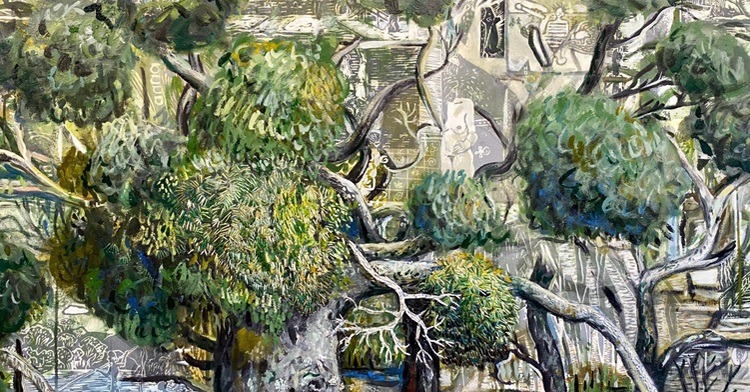

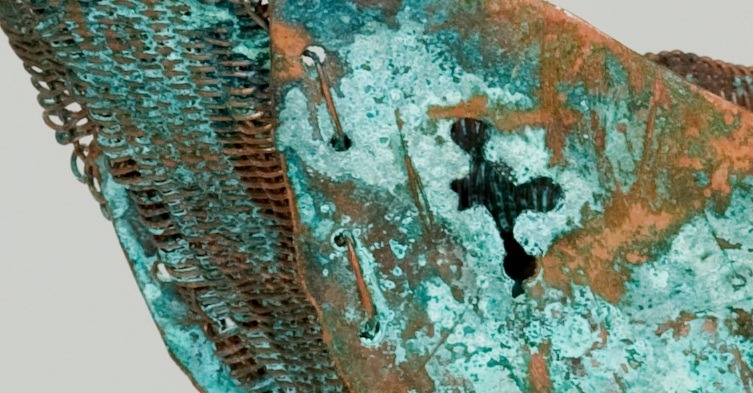
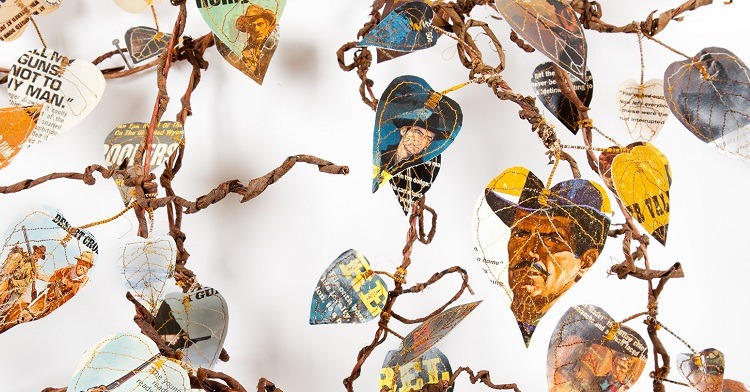
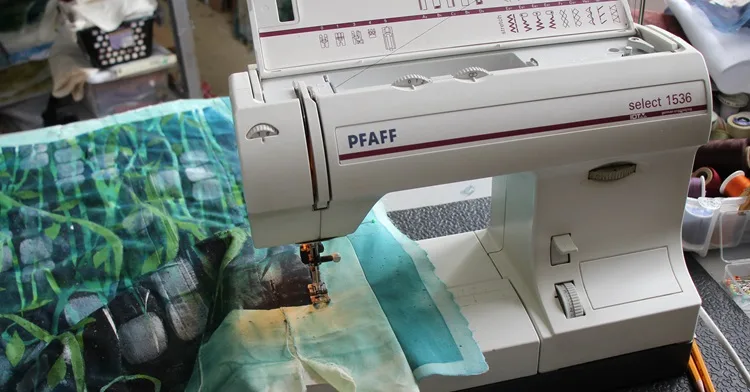
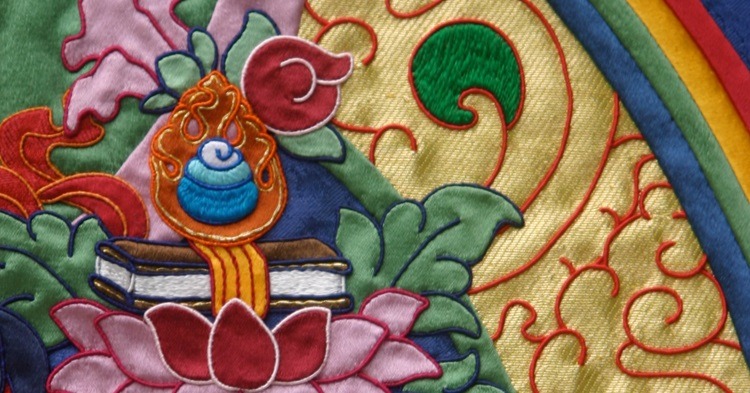
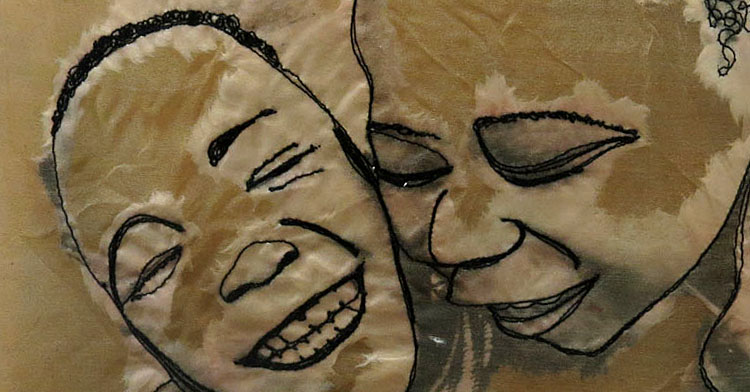
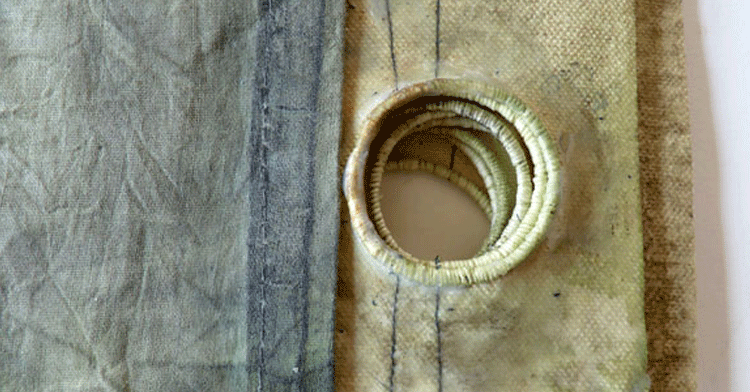
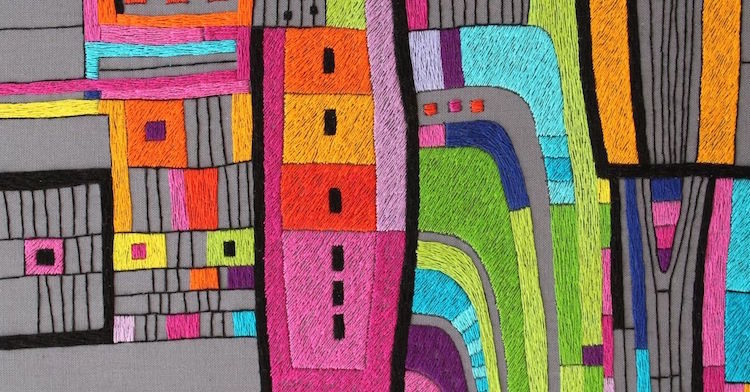
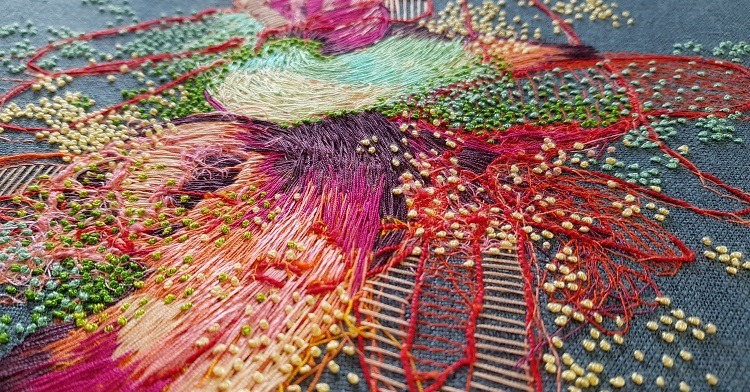
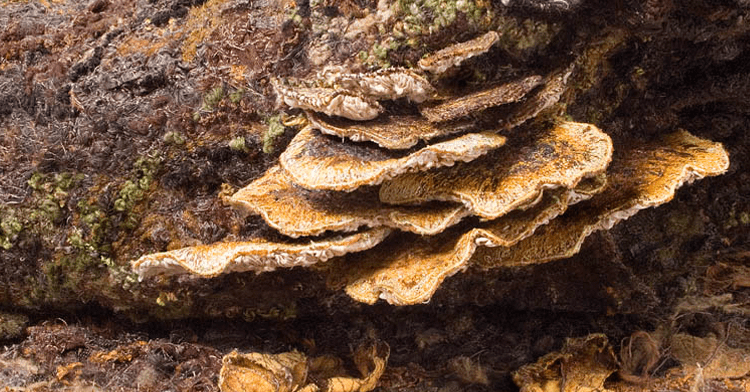
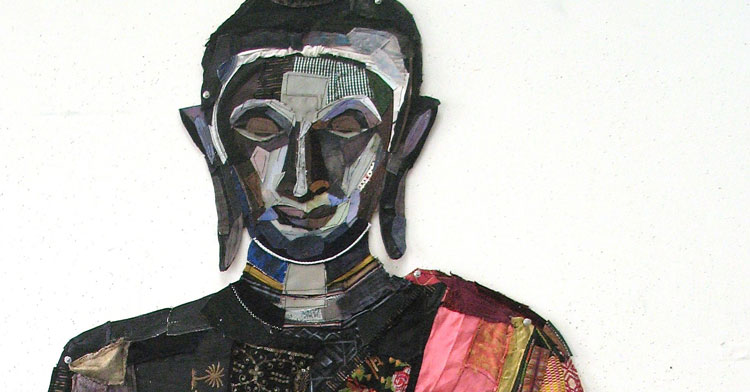
8 comments
Jayne
Ty for adding the picture of your Mum ❤️ . Your Scottish grandfather was very wise . I relate to 3rd generation and I want to be a good role model for the 4th generation of our family. Keep teaching us Kurt
Alison Harker
What an inspirational article on philosophy and practice- giving insightful and beautiful
outcomes for us all to enjoy.
This practice chimes with me having visited family in N.Queensland-now living in east coastal Scotland and collecting marine waste washed up during recent storms.
As a community group, we are considering ways to turn these finds into Art work to draw attention to the problems while celebrating creativity and community friendships.
Huge thanks for more inspiration!
Tina
A great read, and thought provoking. And Breathe!
Will try & apply to my known practice.
Margi
Inspirational work…I love the layering of media and stitch as the ultimate mark. Thanks so much for that interview.
Andrea
I like and agree to his philosophy of art and life. The byproducts – artworks are amazing. Would love to see and read more of him.
Anne
What a fabulous artist. Wished I could afford to study with him. Long way from Canada.
Christine Godden
Found this very soothing and Zen like. It made me consider my own approach to my own textile work and try not to be in too much of a hurry and calm down. I have no real time constraints to finish a piece but still need to Get On and Finish It!
Aside: although I am a Reiki master I hadn’t thought to apply the concepts to my artwork. I shall now do so. Thank you.
iHanna
Such cool embroidery work, and love that picture of Kurt’s mother doing macrame stuff!